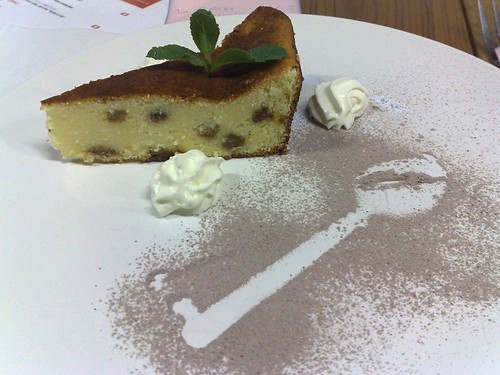What to do with Polish twaróg cheese? Posted by Kasia on Feb 1, 2015 in Uncategorized
I’m a big fan of cheese. What makes it so attractive is that countless variety of tastes, genres and textures makes cheeses one of the largest groups of food products. The biggest producers of cheese are France, Switzerland and Holland – there’s no doubt that these products taste delicious. Poland is obviously far behind, especially in the case of hard cheeses, but in history has also achieved some interesting products. There is about 4000 types of cheese in the world – 90 types are Polish.
Traditional Polish cheese, called twaróg, and also known as white cheese (biały ser) is one of the most loved by Poles, and on the other hand, one of the most original. It is difficult to find exactly the same flavor anywhere else in the world. Although we usually translate Polish twaróg into curd cheese, this is not the same curd cheese you may know. It does not taste similar to the popular cottage cheese either.
Polish twaróg is made from cow milk. Unsurprisingly it has a white color, elastic consistency and lumpy structure. Twaróg cheese production is based on a so-called acidification of milk. Then, process involves gradual heating (without reaching the boiling point), and cooling followed by straining.
As usually in old cuisines, some traditional, basic foods and ingredients are omnipotent and quite universal. The same is with Polish white cheese, which is widely used as a basic ingredient of many Polish appetizers and simple foods.
Polish twaróg is used to prepare popular Polish appetizer called twarożek. All you need to do is to mix the cheese with spices and some chopped vegetables – most often onion, radish, and/or cucumber. Generally speaking chives are also considered to be an essential element of twarożek – giving not only the taste, but also an aesthetic charm 🙂 Twarożek is one of quite popular Polish breakfasts – very straight food, easy to make, and not only tasty, but also healthy and nourishing.
Another way of eating twaróg is to make it sweet.
The first thing, and probably most important one, is a sweetened white cheese as a basic element of Polish cheesecake (sernik). Usually vanilla sugar is used as an addition. Raisins are added as well sometimes. Baking cheese in high temperature changes its structure and the taste more delicate (no tart aftertaste). Polish cheesecake is a real delicacy.
Similar application is using twarog to make naleśniki (crepes) and pierogi. Pierogi with sweet curd cheese are probably quite well known for most of you . Both usually refried after filling with white cheese and poured with something tasty (e.g. fruit or chocolate sauce, or some sweet cream).
One other, completely simple way to make a dessert out from twaróg is to simply sweeten it and use to make sandwiches. Put some favorite dżem or powidła on it to make this simple food even more delicious!
Smacznego!
If there is another way you use Polish white cheese, please share it with us in comments below:)
Do następnego razu… (Till next time…)

Build vocabulary, practice pronunciation, and more with Transparent Language Online. Available anytime, anywhere, on any device.
About the Author: Kasia
My name is Kasia Scontsas. I grew near Lublin, Poland and moved to Warsaw to study International Business. I have passion for languages: any languages! Currently I live in New Hampshire. I enjoy skiing, kayaking, biking and paddle boarding. My husband speaks a little Polish, but our daughters are fluent in it! I wanted to make sure that they can communicate with their Polish relatives in our native language. Teaching them Polish since they were born was the best thing I could have given them! I have been writing about learning Polish language and culture for Transparent Language’s Polish Blog since 2010.






Comments:
John Murawski:
Kassia, I have access to fresh and raw milk here as our cousins run a dairy farm nearby. I often wanted to make twaróg cheese but haven’t had a recipe yet.
Do you happen to have one and is it made with raw milk?
Kasia:
@John Murawski John, I will try to find (and test) a recipe on how to make white Polish cheese. I will try to post it soon! My mother used to make it all the time, so I will share it soon:)
Lorene Wedeking:
In Hungary it’s turos and used in many ways like in Poland, but the very best — candy bars. Turos covered with chocolate and because they are cheese, found in refrigerated counters. Even McDonald’s sells these candy bars in Hungary. Always look forward to having this cheese when I get back to Central Europe.
Patrycja:
Kasiu pozdrawiam Cie serdecznie sledze twoj blog z Karoliny Poludniowej. Tutaj twarog znajdziesz pod nazwa ”farmers cheese” przez kilka lat probowalam szukac wlasnie white cheese metoda prob I bledow znalazlam.
Steaphan MacRisnidh:
In Scotland, curds are mixed with a little cream and salt to make crowdie. The crowdie was once commonly used to make a dessert called cranachan in English, but ‘fuarag’ in Scottish Gaelic. It is often eaten at Halloween. Nowadays people make cranachan with double cream instead. Toasted oatmeal, a dash of whisky, honey and often eaten with fresh summer fruit like raspberries.I bought the polish curds because the English supermarkets in Scotland only sell a little tub of crowdie as a luxury item. Probably not many places in Scotland produce crowdie now.
Jane O’Connell:
Is Twarog Lowicki half fat curd cheese suitable for vegetarians?
Thank you.
Hayley Thorp:
I used to break this up and mix it with fruity yogurt for breakfast! 🙂